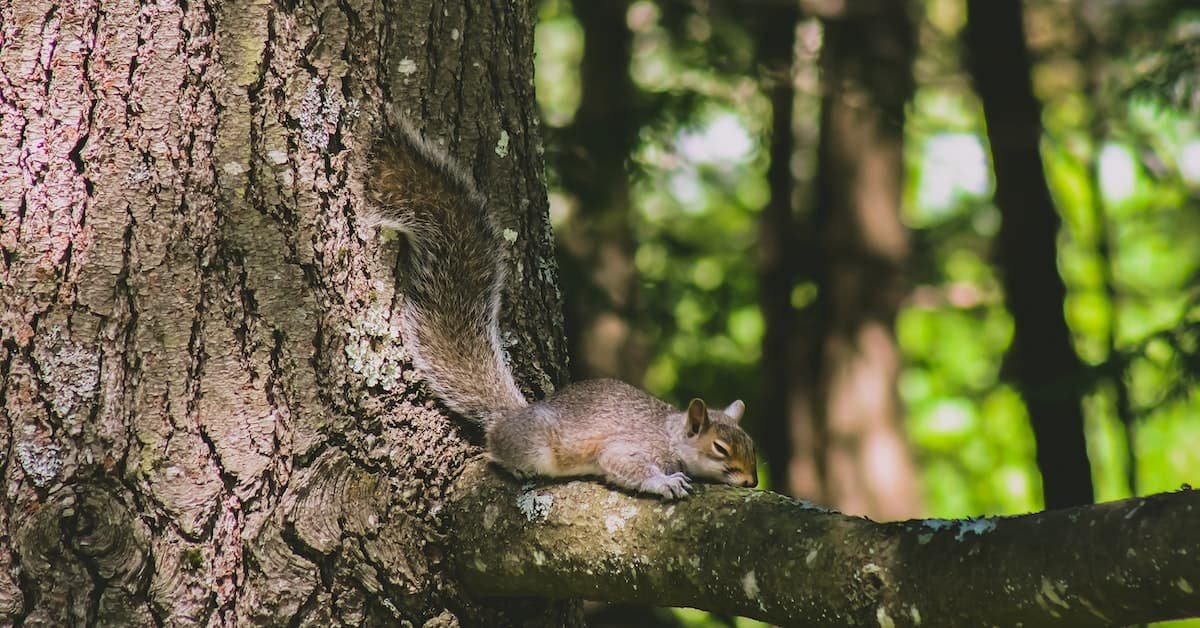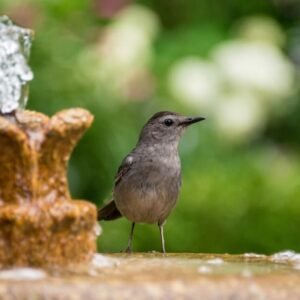
Squirrels, with their diverse sleeping habits, have long fascinated researchers and nature enthusiasts alike. Understanding where these small creatures sleep is crucial for comprehending their behavior and ecology.
While the sleeping patterns of squirrels vary depending on their geographical location, type, age, and time of year, they primarily seek refuge in tree nests or ground burrows.
Ground squirrels, for instance, dig their nests into the ground, while tree squirrels dwell between trees, particularly in coniferous forests. Additionally, flying squirrels, a type of tree squirrel, construct their nests in trees.
In North America, five common species of squirrels, including Eastern grey squirrels, Western grey squirrels, black squirrels, fox squirrels, and red squirrels, exhibit distinct sleeping habits.
Furthermore, squirrels display hibernation and estivation patterns to adapt to their environment. Hibernation occurs during winter when northern climates drop, and ground squirrels dig burrows and sleep through it.
Estivation, in contrast, takes place in hot climates, where ground squirrels enter a state of low activity.
By delving into the sleeping habits of squirrels, we can gain valuable insights into their survival strategies and ecological role.
Short Summary
- Squirrels sleep in tree nests or ground burrows.
- Squirrels’ sleeping habits depend on their geographical location, type, age, and time of year.
- Hibernation and estivation are distinct sleeping patterns for squirrels.
- Squirrels build nests in trees called drays or dens.
Where Do Squirrels Sleep?
Squirrels sleep in tree nests or ground burrows, depending on their geographical location, type, age, and time of the year.
In urban environments, squirrels have adapted their sleeping patterns to accommodate the changes in their habitats.
They often make use of man-made structures such as attics, chimneys, and abandoned buildings as alternative sleeping locations.
This adaptation allows them to find shelter and safety in areas where natural nesting sites may be limited due to habitat loss.
However, the impact of habitat loss on squirrel sleeping habits cannot be ignored. The destruction of trees and the reduction of suitable nesting sites can disrupt their natural sleeping patterns and force them to seek less ideal locations.
This can lead to increased vulnerability to predators and other dangers. Therefore, preserving and providing suitable habitats for squirrels is crucial to maintaining their natural sleeping habits.
Different Types of Squirrels Nests
Nest construction is a meticulous art, with squirrels crafting cozy abodes high in the treetops or nestled within the earth, providing a sense of security and comfort akin to a warm embrace.
Squirrels employ different nest construction techniques based on their species and environmental factors. Tree squirrels, for instance, utilize materials such as leaves, twigs, and moss to build nests called drays.
These drays are carefully constructed in the branches of trees, providing a safe haven for squirrels to rest and sleep.
On the other hand, ground squirrels are adept at digging burrows and creating dens underground. Factors influencing nest location choice include proximity to food sources, protection from predators, and suitable climate conditions.
By carefully selecting their nest locations, squirrels ensure their survival and well-being in their natural habitats.
Squirrels Hibernate During The Winter
During hibernation and estivation, squirrels undergo distinct sleeping patterns influenced by weather conditions and their natural environment.
Hibernation is a period of deep sleep that occurs during the winter when food sources are scarce, and temperatures drop in northern climates. Ground squirrels, such as the California Ground Squirrel, dig burrows and sleep through the winter during hibernation.
On the other hand, estivation is a state of low activity that occurs in hot climates. Ground squirrels in these regions enter estivation to conserve energy and avoid extreme heat.
The hibernation patterns in different squirrel species vary depending on their geographical location, type, and age. Environmental factors such as temperature, food availability, and daylight hours play a crucial role in triggering and regulating squirrel hibernation and estivation.
FAQs:
What are some common predators of squirrels?
Squirrels face a variety of predators, including domestic cats, birds of prey, snakes, and canines. Despite the risks, squirrels have evolved remarkable nest-building skills to provide them with protection and safety from these potential threats.
How long do squirrels typically sleep each day?
The average sleep duration for squirrels varies depending on factors such as geographical location, type, age, and time of year. Weather conditions also impact their sleep patterns, with hibernation and estivation occurring in response to extreme temperatures.
Do squirrels sleep during the summer months?
During the summer months, squirrels do not hibernate but rather sleep less due to the warmer seasons. Their sleeping habits are influenced by weather conditions, with hibernation occurring in winter and estivation in hot climates.
Can squirrels sleep in man-made structures, such as attics or sheds?
Squirrels can sleep in man-made structures, such as attics or sheds, in urban areas. Human structures provide shelter and protection for squirrels, although their preference is to sleep in natural tree nests or ground burrows.
How do squirrels choose where to build their nests?
Squirrel nest location preferences are influenced by factors such as food availability, safety from predators, and proximity to suitable nesting materials. These factors guide squirrels in choosing where to build their nests.



